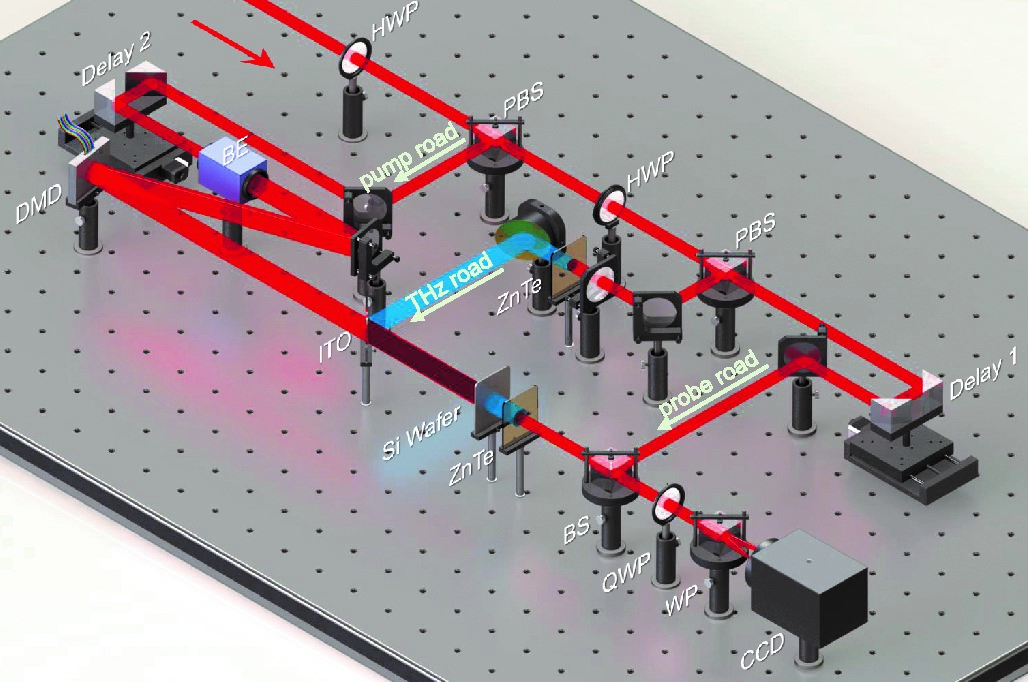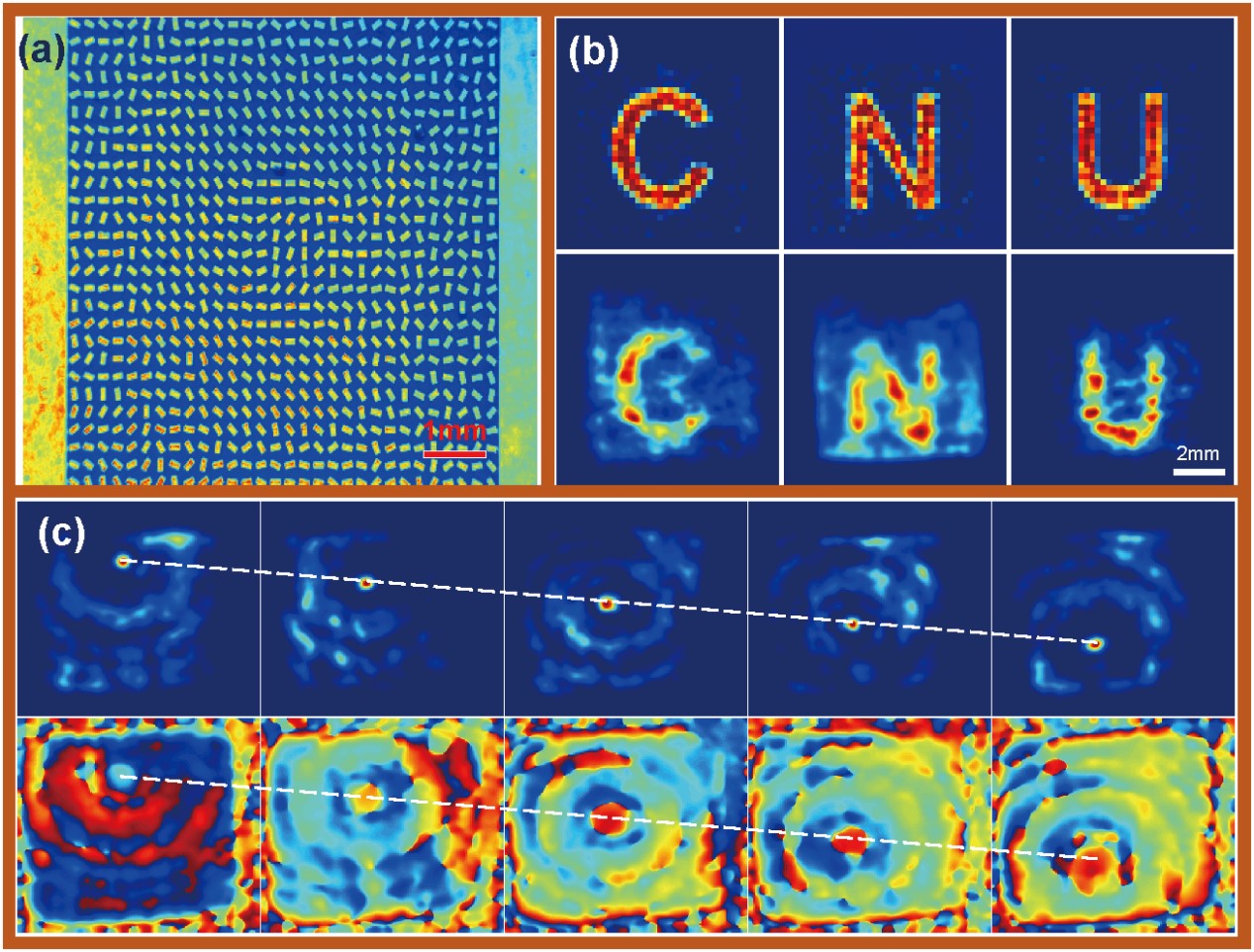Metasurfaces are planar structures consisting of a series of artificially designed sub-wavelength antennas. Compared with traditional optical components, the metasurface, being ultra-fine, ultra-thin and achieving precise arbitrary wavefront modulation, has important applications in optical interconnection, integrated optics, nano-optics, etc. However, how to achieve its dynamic adjustability remains one major challenge.
Recently, a joint team, led by professor SITU Guohai from Shanghai Institute of Optics and Fine Mechanics, Chinese Academy of Sciences, and professor ZHANG Yan from Capital Normal University, proposed a reconfigurable terahertz metasurface implementation scheme. The results were published on Advanced Optical Materials.
The team used a high-intensity femtosecond laser with patterns projected onto a piece of silicon wafer to create metasurface effect, modulating the following terahertz pulse.
The output terahertz varies when the projected pattern changed, achieving a light-controlled reconfigurable terahertz metasurface. This principle is mainly based on the photoconductivity effect. Semiconductor will generate carriers under the illumination of laser and lead to the increase of the conductivity, which is positively correlated with the illumination power. When the conductivity rises to a certain value, the illuminated area can be regarded metallized or weakly metalized.
As metallic structures are commonly used in metasurfaces, the patterned illumination semiconductor can realize a similar function. When the illumination laser is removed, photo-carriers are quickly recombined to the initial state.
This scheme can thus achieve erasing and rewriting of metasurfaces. The advantages of this scheme are threefold. First, complicated processing is avoided as only a thin silicon wafer (10μm) is required. Second, it can realize arbitrary real-time wavefront modulation with extremely simple operation. Last, the modulation speed is extremely high. In theory, it can reach 4000 frames per second.
This scheme can be applied to real-time imaging, optical switch, time-varying material for nonlinear effects, information processing, point-by-point scanning for microscopy, adaptive optics.

Figure1. Schematic of dynamic holographic display with light control metasurface

Figure2. Terahertz time domain pump imaging system

Fugure3. Terahertz dynamic modulation imaging results(Images by SIOM)
Article website: https://onlinelibrary.wiley.com/doi/full/10.1002/adom.201801696
Contact:
Mr. Cao Yong
General Administrative Office
Shanghai Institute of Optics and Fine Mechanics, CAS
Email: caoyong@siom.ac.cn